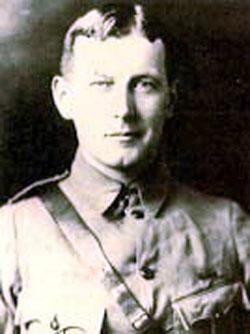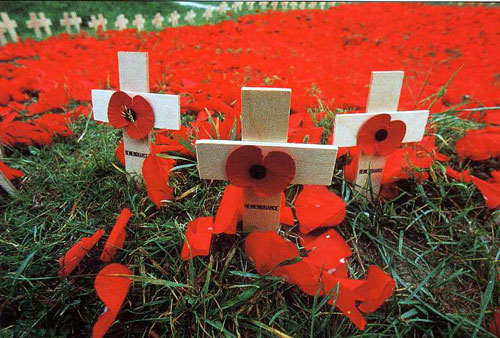John Mc Crae

If on the British tombs you can see discrete paper poppies, sometimes plaited in crown, which you can find on all the steles and cenotaphs, it is to John Mc Crea that we owe this image. France chose the cornflower. Since 1921 the British chose this fragile field flower. However, the ?flower of memory? used on the 'Poppy day?, has not the duty to remind the colour of the parade uniforms but instead the vision of the battlefiels of Fssex Farm in Boezinge, near Ypres. The poem ?In Flandres Field? refers to all statements of the famous and unfamous autors and became the symbol of a generation that was killed in the prime of time, following the example of Dorgelès of of Genevoix.
This poem evokes with a lot of simplicity the battlefields of Flandres : In Flanders Fields the poppies blow Between the crosses, row on row, That mark our place; and in the sky The larks, still bravely singing, fly Scarce heard amid the guns below. We are the Dead. Short days ago We lived, felt dawn, saw sunset glow, Loved, and were loved, and now we lie In Flanders fields. Take up our quarrel with the foe: To you from failing hands we throw The torch, be yours to hold it high. If ye break faith with us who die We shall not sleep, though poppies grow In Flanders fields.
The countryside of the French and Belgian Flandre is literally scattered of these battlefields where you can see vestiges and places of memory. Today it is possible to visit Mc Crean's emplacement in Boezinge, where he wrote this poem and where the bunker border the Essex Farm. Still now they it erect watching over the channel along the Diksmuideweg (road of Dixmude)...

Les coquelicots. Photo John Folley

